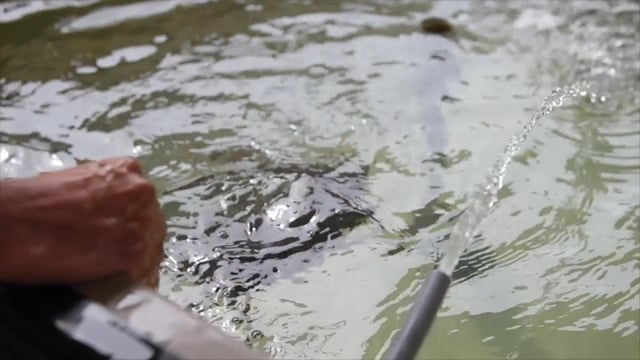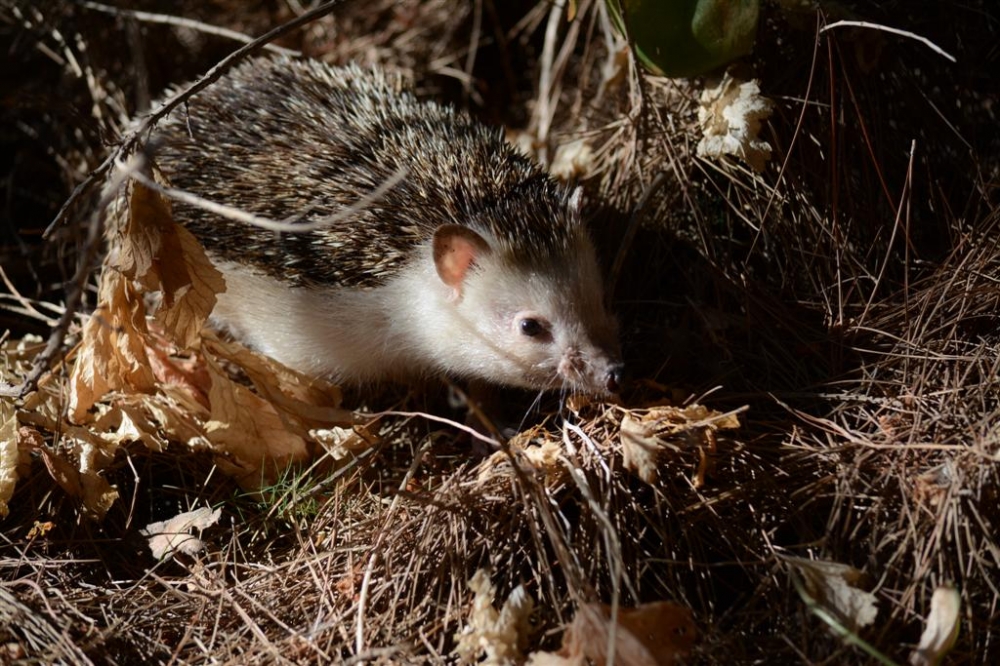[WATCH] Giving wildlife a second chance: Nature Trust’s rescue and rehabilitation services
Inside Nature Trust's rescue and rehabilitation services


Tama the turtle was found severely wounded, floating off the island of Comino, its wounds festering and teetering close to death, after being struck by a propeller. However, no matter how desperate her injuries seemed, the group of dedicated volunteers at Nature Trust Malta, persevered where very few might have.
Now, a couple of weeks away from her rescue, Tama has already had positive results and is showing improvement on her long road to full recovery at the tanks at St Lucian’s Tower in Marsaxlokk.
“Although it’s too early to be sure of her full recovery, she has so far responded promisingly to the treatment she is being given,” Nature Trust Malta president Vincent Attard told us during our visit to the tower. He also explained that the nature of her wounds was so extensive that she had had one of her flippers amputated.
Attard explained that the organisation treated euthanasia as a last resort, and that it often persevered in caring for animals against the odds. “We have a 71% success rate, which is very high, particularly when you consider the limited resources we have,” he said.
Attard recalled, a particularly long-term and disheartening case, where a turtle had been shot in the head and subsequently suffered extensive brain damage.
“Ulysses, the turtle in question, was never released in the wild again because he was no longer capable of catching his own food, or even of maintaining proper coordination. In short the incident led to a severe disability,” Attard said, adding that the turtle had sadly died in captivity after contracting pneumonia due to cold winter temperatures.
“Cases like this are one of the many reasons we desperately need our own Wildlife Rehab Centre,” Attard said, pointing out that such a centre would allow the organisation to have more state of the art equipment and better care for recovering turtles or prolong life as far as possible.
Attard further explained that the new centre was estimated to cost some €1.5 million, and that the group hoped to benefit from EU funding for the project.
“The group operates on a donation and volunteer basis, so funds are always a problem,” Attard said, stressing that medications often cost quite a bit of money.
Attard said that the group welcomed donations and that it also had a system of sponsorships both on a corporate level and even on a more personal level.
“Companies can choose to give a contribution to the group, which naturally goes into medication and equipment the group can use.”
“Individuals can also choose to sponsor or ‘adopt’ a turtle,” he said, explaining that the adoption did not entail them physically raising the turtle, but rather that their funds would go into buying the turtles essential medication and food.
Attard said that the centre treated an average of around 20 to 30 turtles every year, but that the situation could change overnight. So much so, that the organisation rescued another turtle, mere hours after we visited the tanks.
However, turtles are not the only animals rehabilitated by the organisation. In fact I was surprised to learn that the organisation also handled rehabilitations and rescue projects for hedgehogs, bats, snakes, chameleons and on rare occasions, dolphins.
“We felt that there was a significant gap in animal welfare services. Whereas there are plenty of services for domestic animals like cats and dogs, there are no services offered to wildlife creatures and protected animals,” he said, stressing that the organisation carried out its projects under strict MEPA permits.
Attard explained that the initial treatment of smaller animals was normally carried out at the veterinary clinic followed by short periods of recovery at volunteer’s homes (under MEPA permit).
“Once and if we start the new centre, they will all be homed there naturally,” he said, adding that the centre would also have its own operating theatre to ensure that the animals are moved about as little as possible.
Attard also explained that a collapsible pool would be kept at the new centre to cater for dolphins or larger animals if the need arises, though he added that dolphin rescues are very rare, and that the organisation had received two calls for the animals in the past, but that it had only reached one of them alive, and that the rescued baby dolphin had later given in to a heart condition it suffered from.
“The most common calls we get are for hedgehogs,” he said, outlining that the vast majority of the calls concern hedgehogs that were hit by cars passing in rural areas at night.

Attard said that the organisation sometimes received calls about abandoned hedgehoglets and that they require a specific kind of milk, which highlights the importance of professionals caring for them.

Attard said that abandoned young were also among the main calls Nature Trust received for bats.
“The young bats would normally have fallen off their mother’s backs, and caring for baby bats requires even more patience given their minute size.”
Attard explained that the care of young bats and hedgehogs entailed that volunteers had to both feed the creatures themselves and later even train them in catching their own food.

“Recovery for adult bats, which are normally injured when they fly into something like electric wiring, is normally relatively fast, with them staying in care for around two days maximum, obviously depending on the nature of their injuries. However, recovery of baby bats is difficult and might take longer,” he added.
He further elaborated that most of the chameleons and snakes Nature Trust rescued, were victims of attacks from other larger animals, or that they would have become entrapped in glue traps designed to catch mice.
“The important thing to remember is to call us on 99999505 the moment such animals are found, rather than trying to offer assistance yourself.”
Attard stressed, that approaching some of the animals without the appropriate training could be dangerous both to the people in question and to the animals themselves.
“I once almost had my finger bitten clean off by a turtle!” he cautioned, explaining that all volunteers on the rescue team receive specific training on the matter.
He added that although people sometimes had the best intentions in providing help to the injured animals, their efforts sometimes backfired horribly.
“We see a lot of cases on social media, where people try to help turtles they find for instance, but then we get a call about a turtle washing up ashore dead some days later,” he said.
He clarified that swallowing fishing hooks and lines were among the most common injuries for turtles, but that attempting to remove the lines or even pulling them often results in tearing their internal organs. He further added that turtles should never be turned upside down as leaving them in that position for prolonged periods can result in suffocation.
Attard added that people needed to understand that the best thing to do was to inform MEPA, Nature Trust or even a vet to make sure that a professional could make the necessary assessment and determine the best course of action for the animal.
Confronted by the question of how to reduce the possibility of injuring animals so often, Attard said that the knee-jerk reaction would be to not litter as much.
“The litter we throw around effects the wildlife more than we can imagine. For instance, plastic bags that end up in the sea are very easily mistaken for jellyfish by turtles, which subsequently leads to asphyxiation,” he said.
He added that another method of reducing the risk of endangering other animals was to slow down, both on land and in the sea.
“We are partnering with various organisations to place signs warning drivers of the potential presence of hedgehogs across the island,” he said.
"Speed should be avoided even in the sea, to avoid hitting turtles with propellers for instance.”
Attard admitted that although treading carefully was not always possible in the sea, reacting as soon as you suspect hitting something would go a long way.
“Tama’s wounds were not fresh, and had she been rescued sooner, dealing with her wounds would have been much easier,” he said.






.jpg)












.jpeg)



